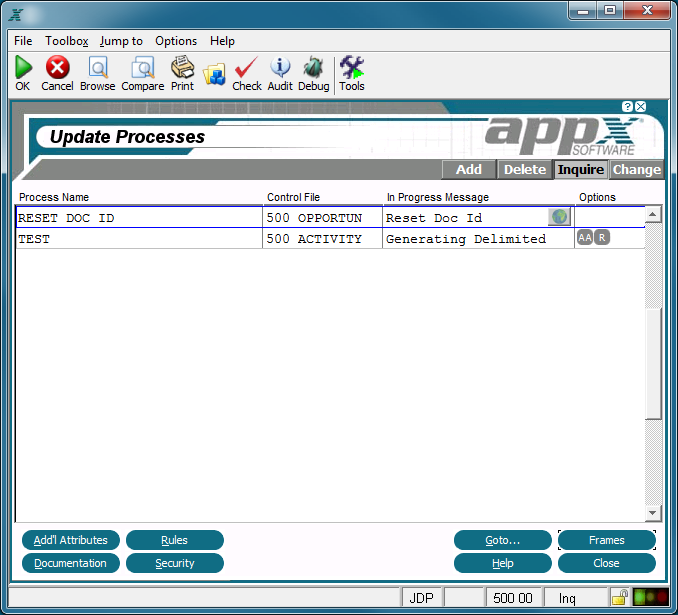Chapter 3-8: Update Processes |
Update Process Specifications Update process specifications establish the general attributes of an update process, including log file and PCF specifications. The Update Processes screen is shown below.
Update Processes Screen The Update Processes screen contains the following fields. Process Name identifies a specific process and must be unique within type and application. App/PCF Name identifies a file by application ID and file name that is to be automatically managed by APPX during the execution of this process. APPX automatically reads the process control file (PCF) during update process execution. However, ILF code must be used to write, rewrite, or delete records. The In Progress Message field may contain up to 60 alphanumeric characters and provides text for the message that displays on the screen while the job process executes in the foreground. Opts are indicators that are present whenever documentation (T), rules (R) or additional attributes (AA) have been defined for this process. The Update Processes screen contains the following options as described in the corresponding sections: Goto... - Allows you to identify and retrieve another record by optionally entering a full or partial key. Frames - Will take you to the next level of the Update specification. Help - Allows you to view online help text for a selected item. Close or Cancel - In Inquire mode, Close allows you to end the current process. Otherwise, cancel allows you to end the current process without saving changes, if any, to the current record. In addition, the menu bar provides the following pulldown menus: Toolbox - Same as the Process Toolbox Pulldown Menu. Jump to - Same as the Process Jump to Pulldown Menu. |
Application Design Manual "Powered by Appx Software"1094 ©2006 By APPX Software, Inc. All Rights Reserved |
